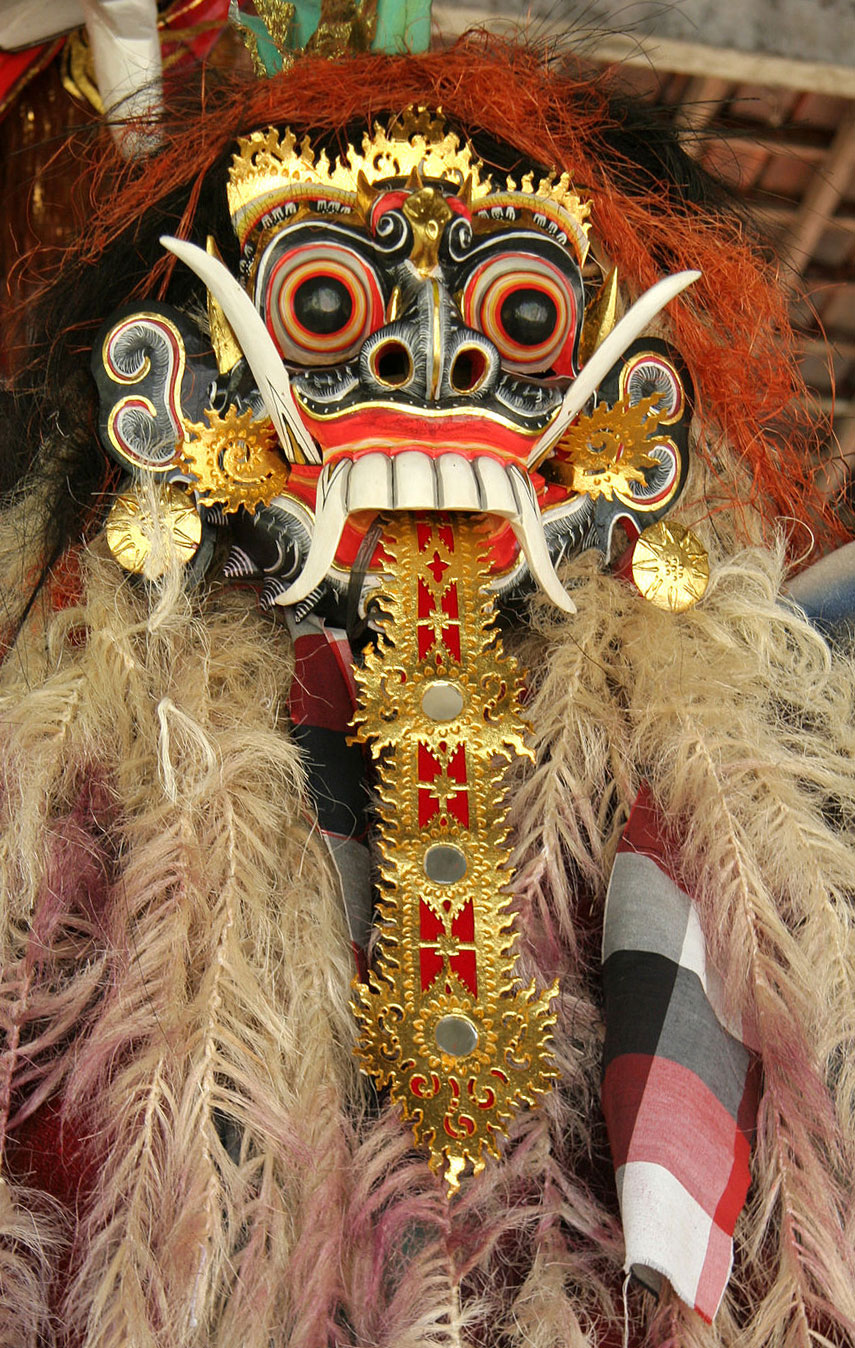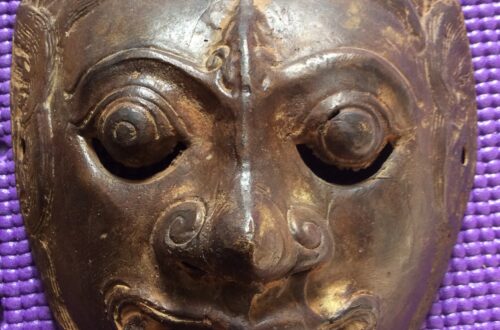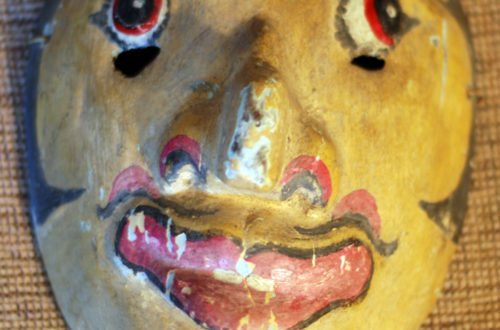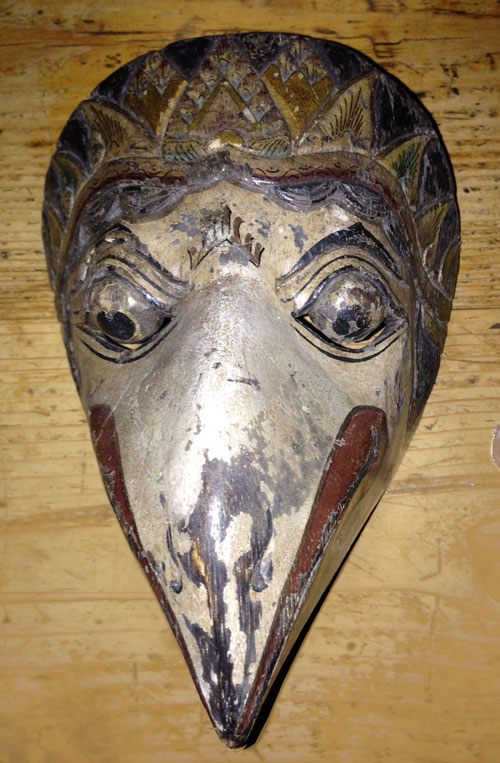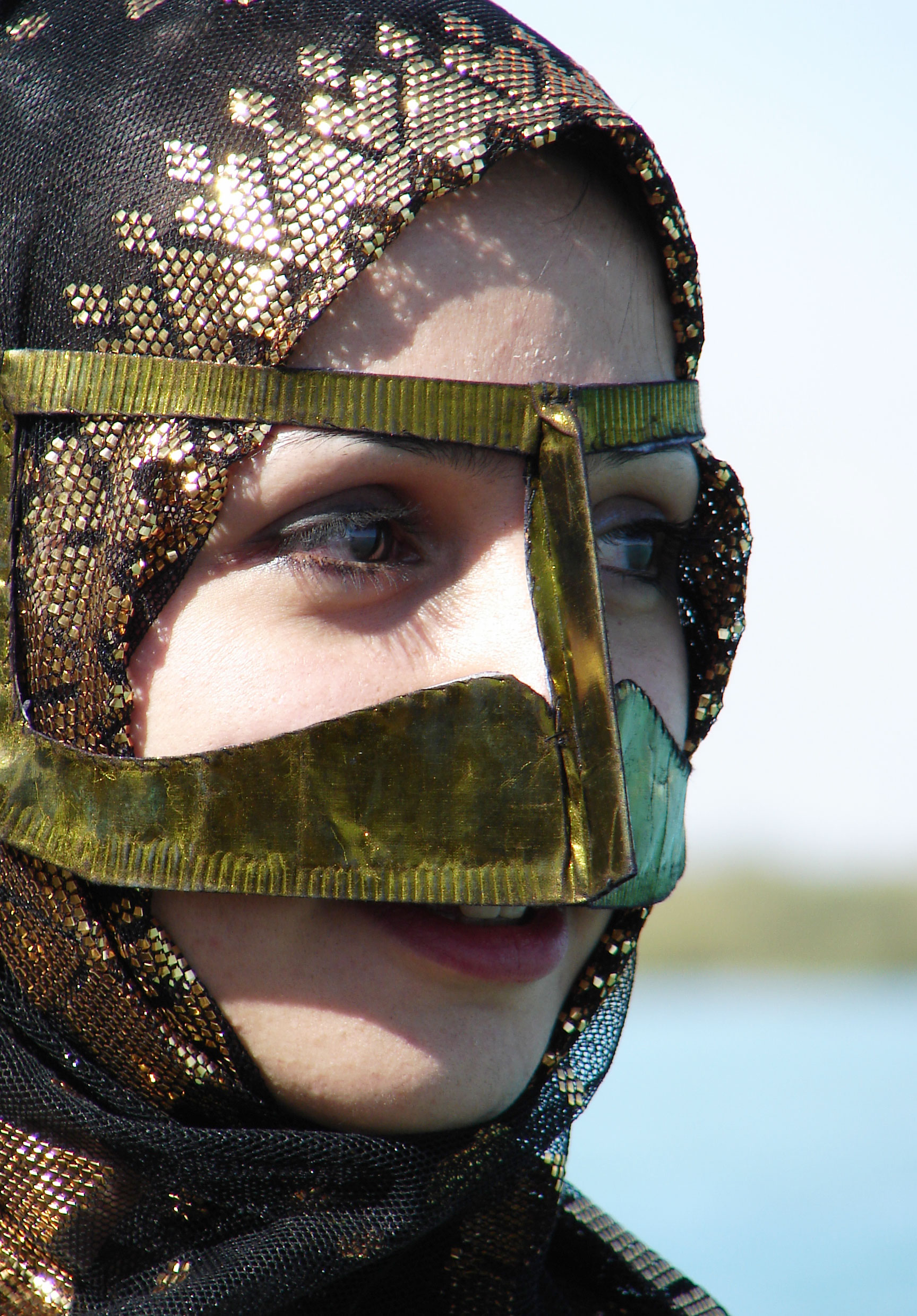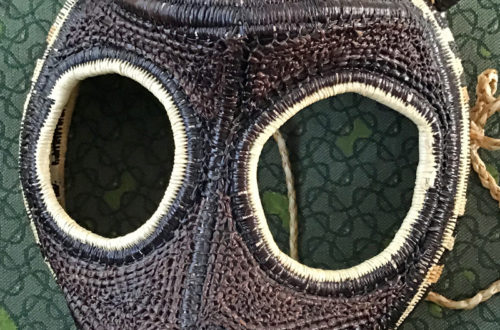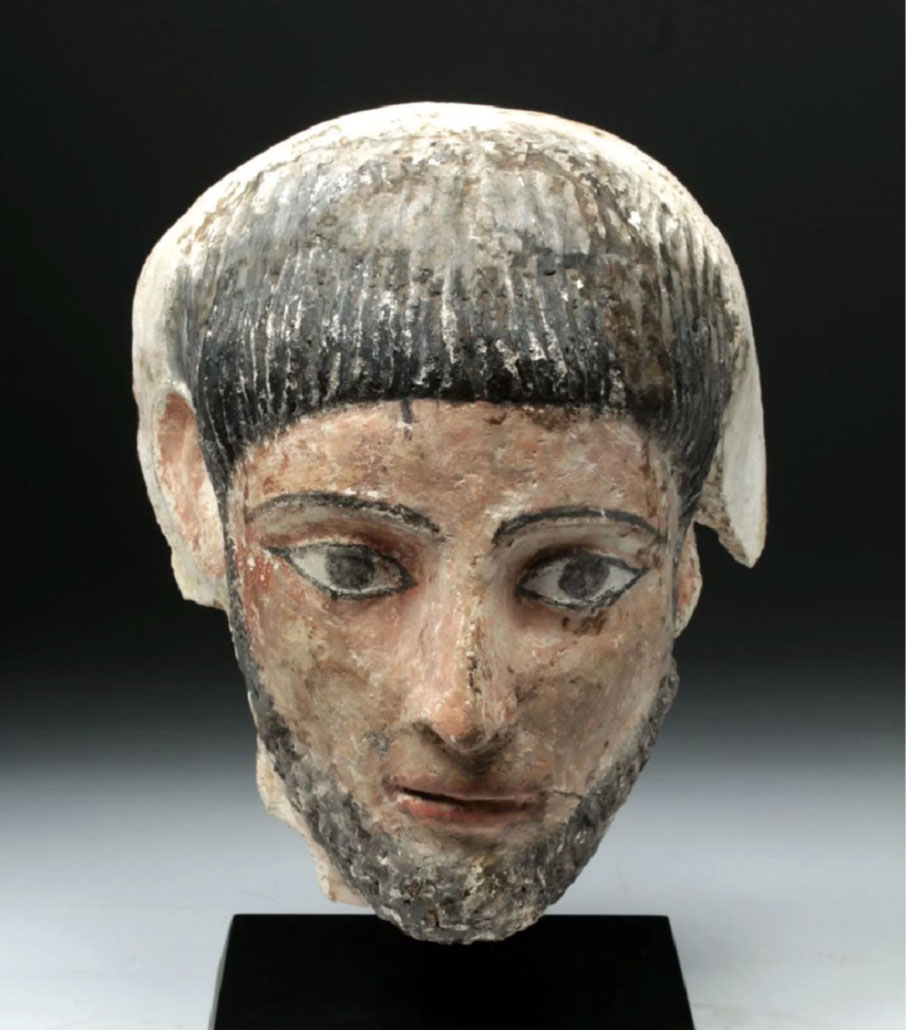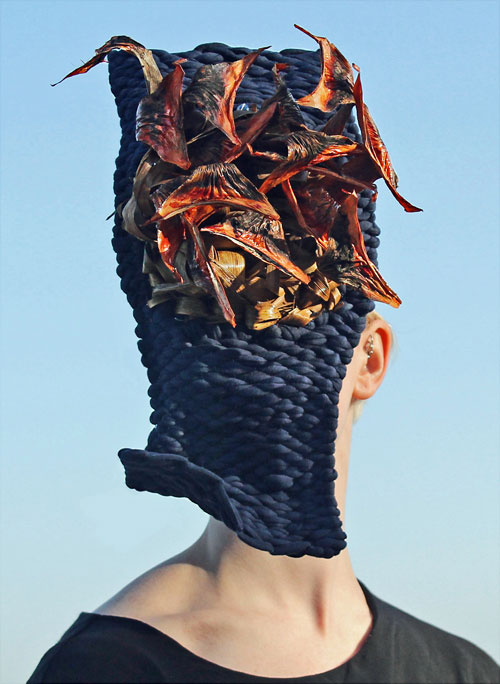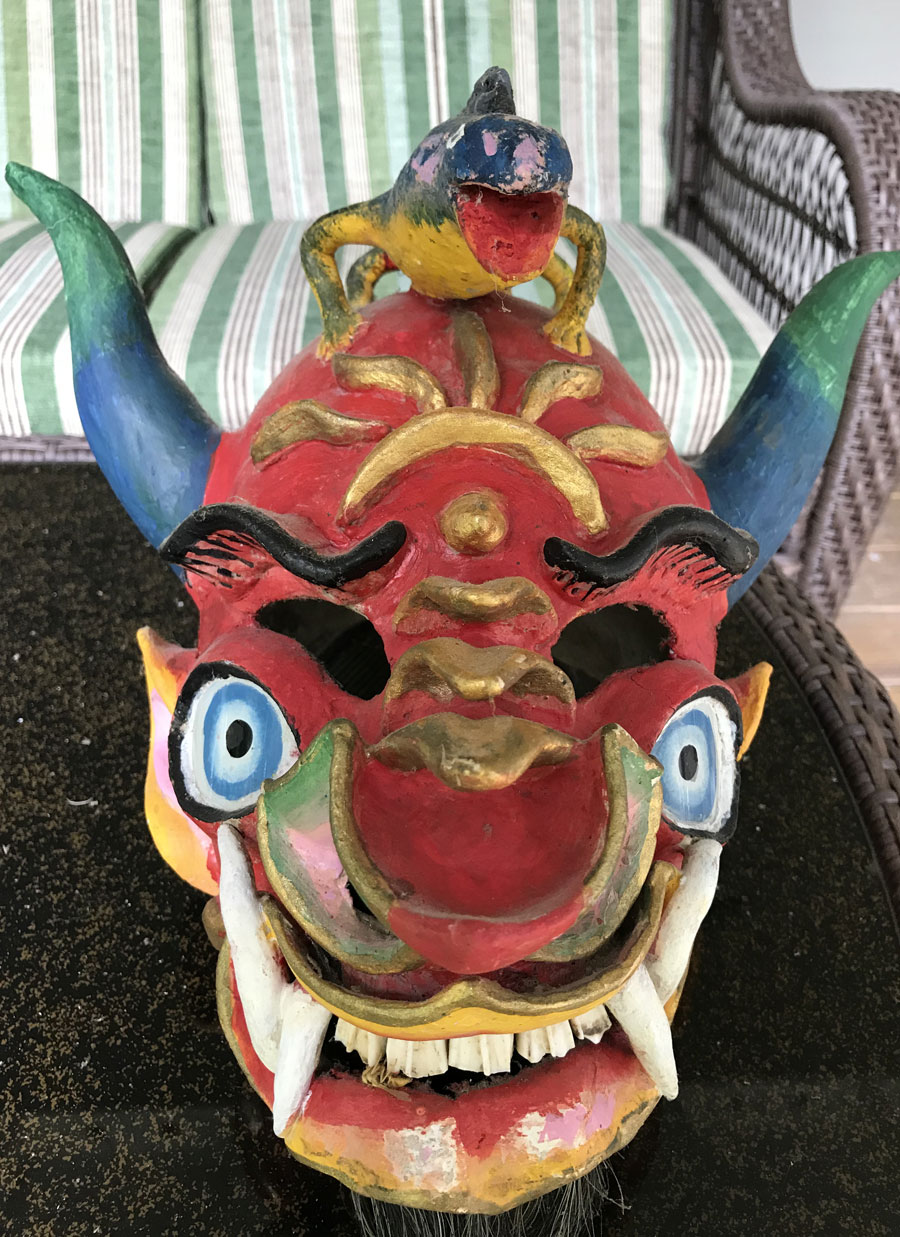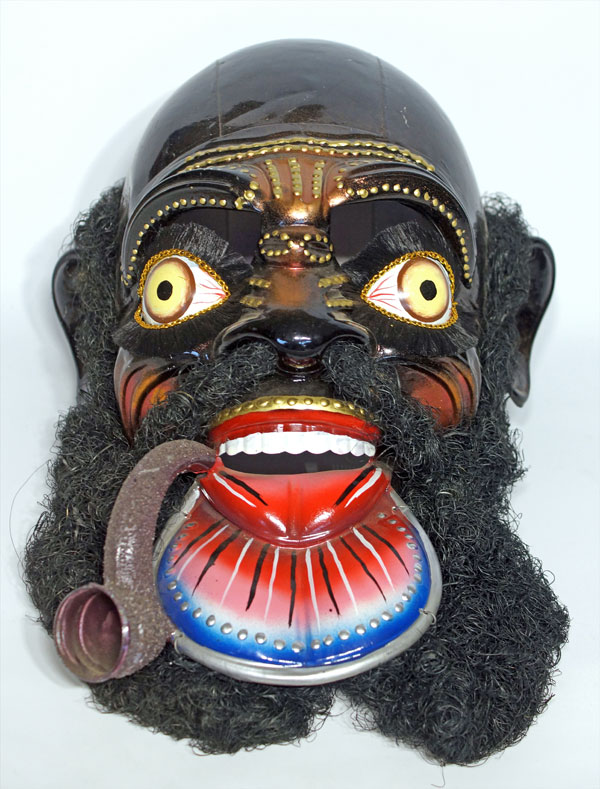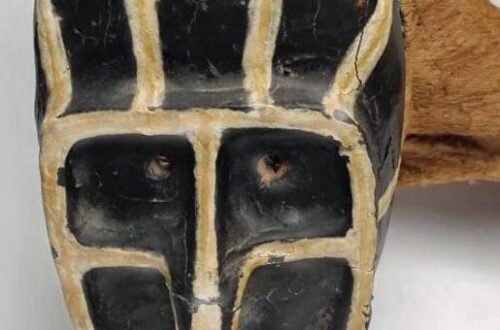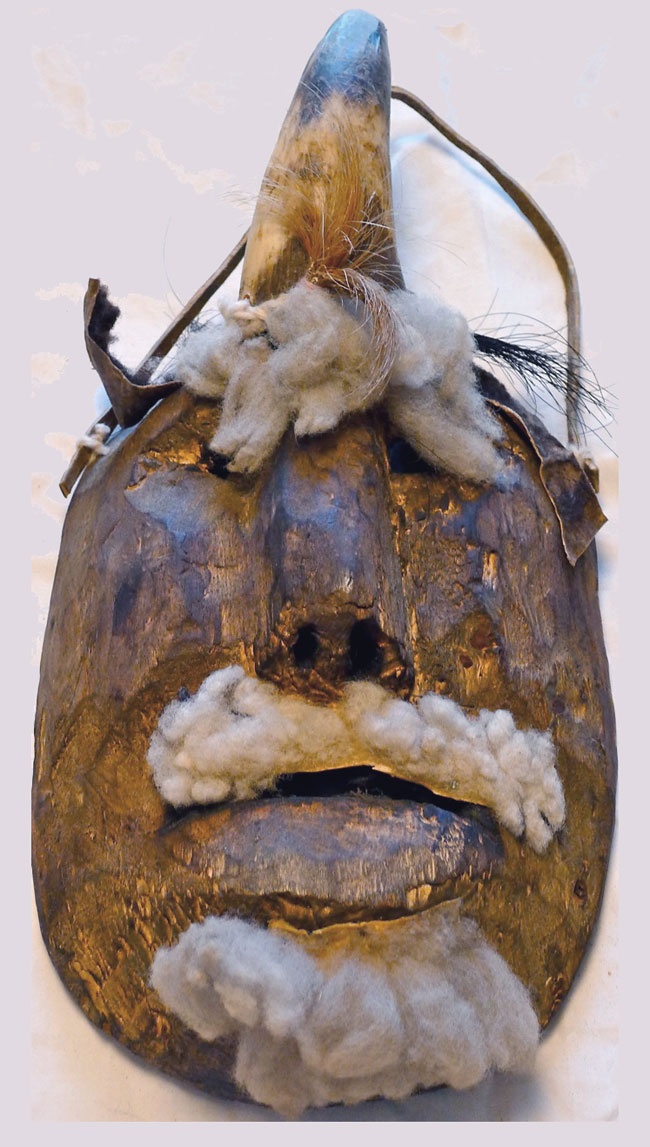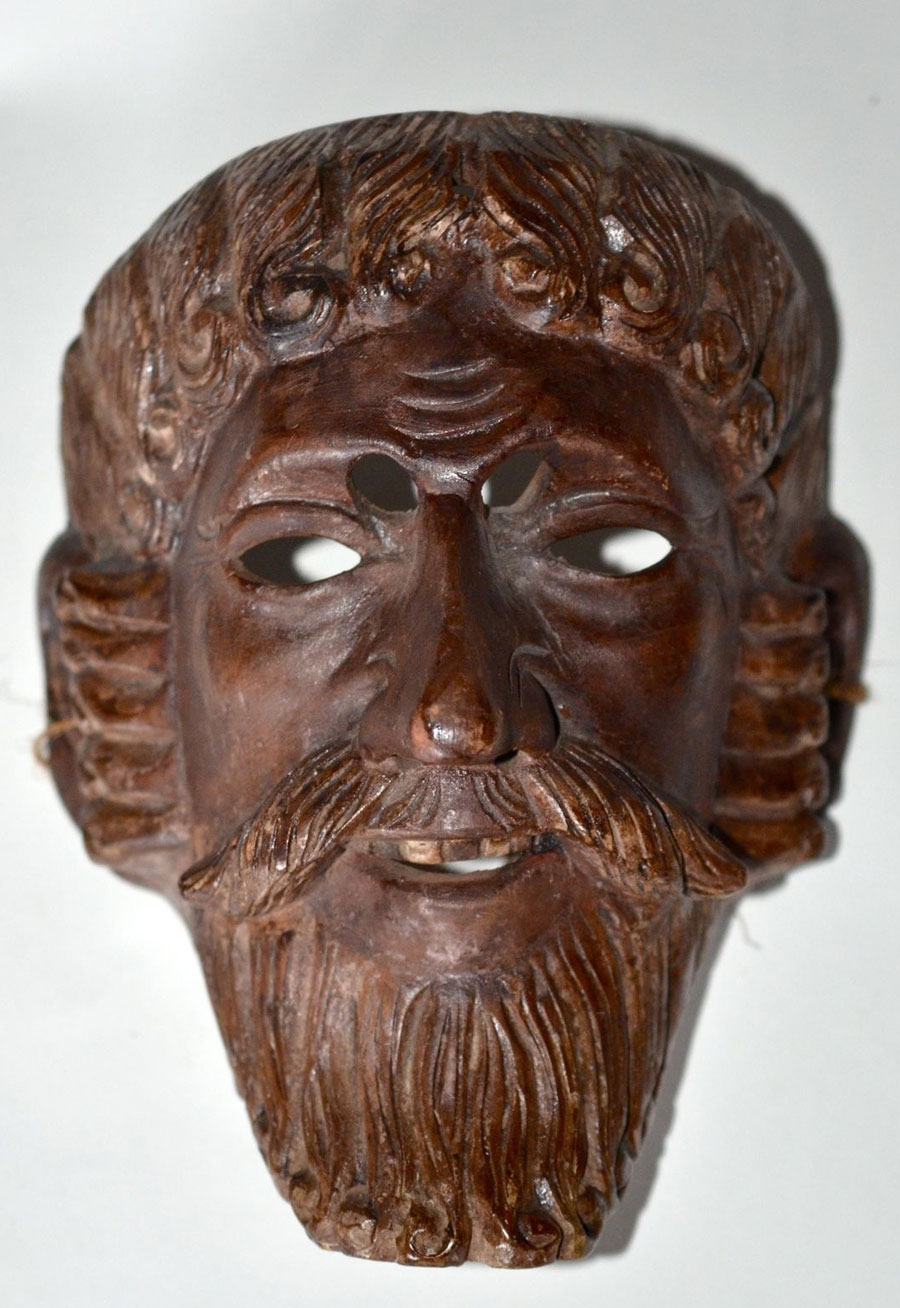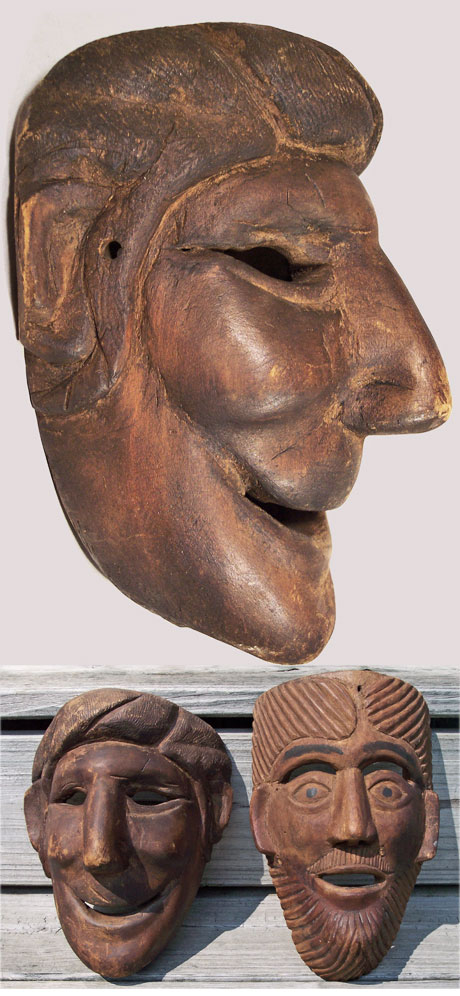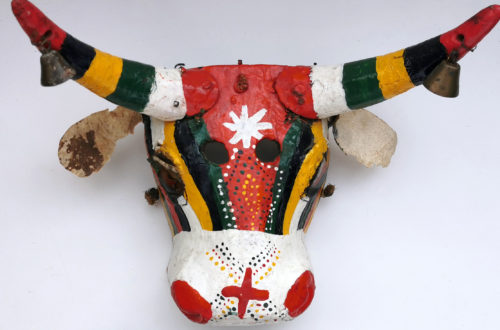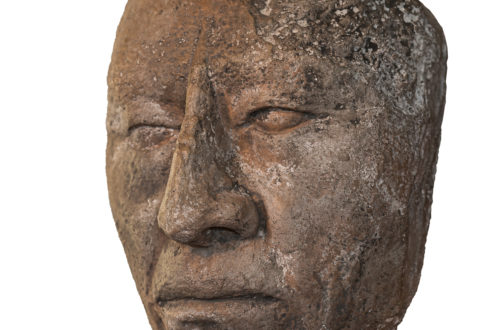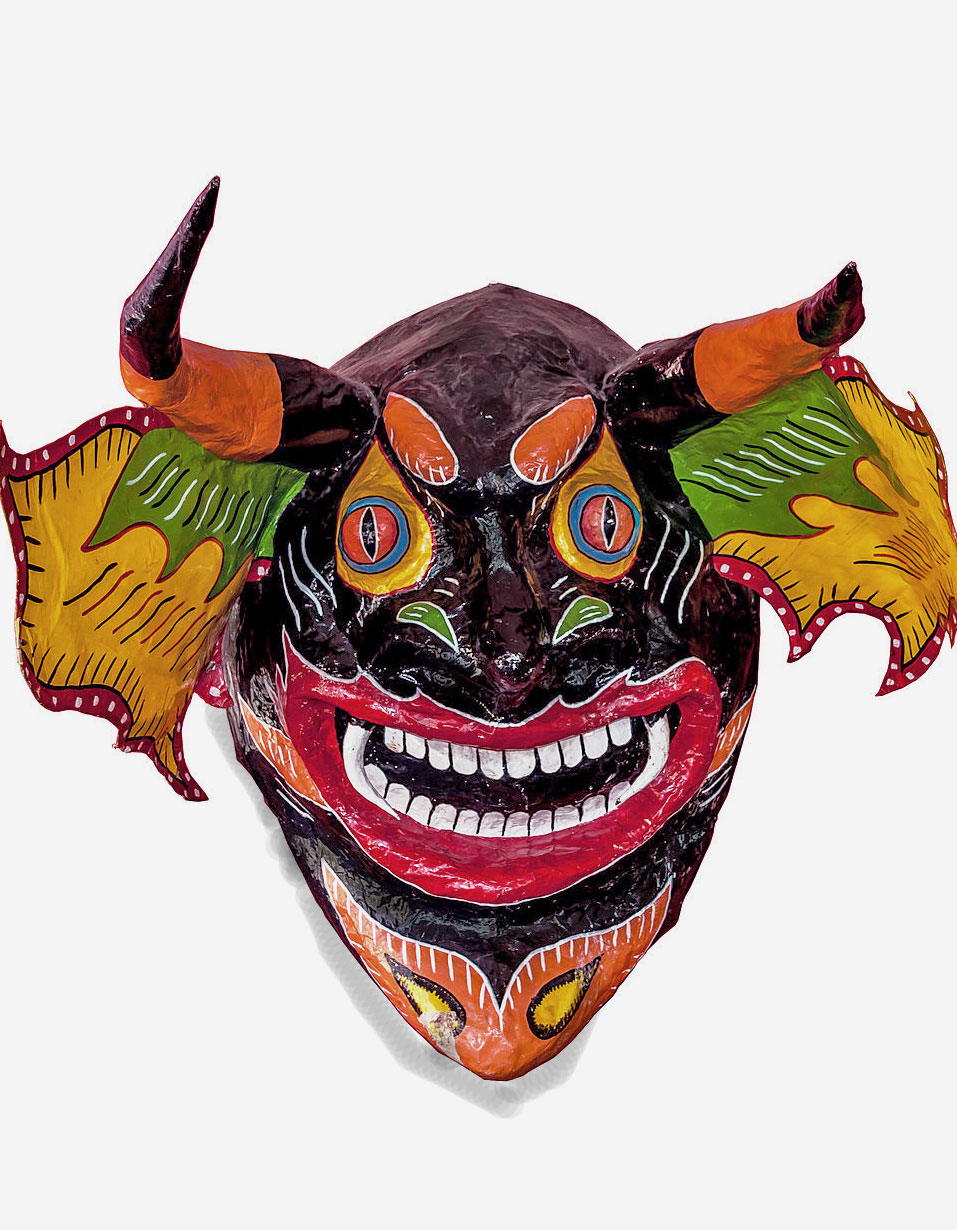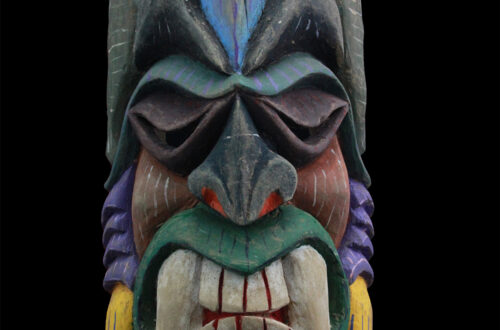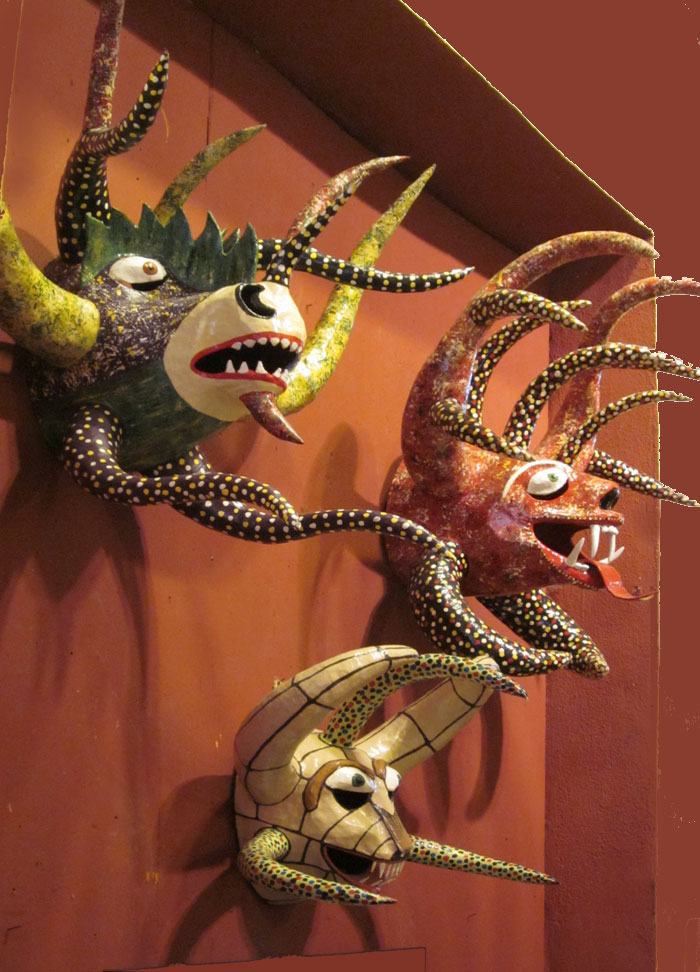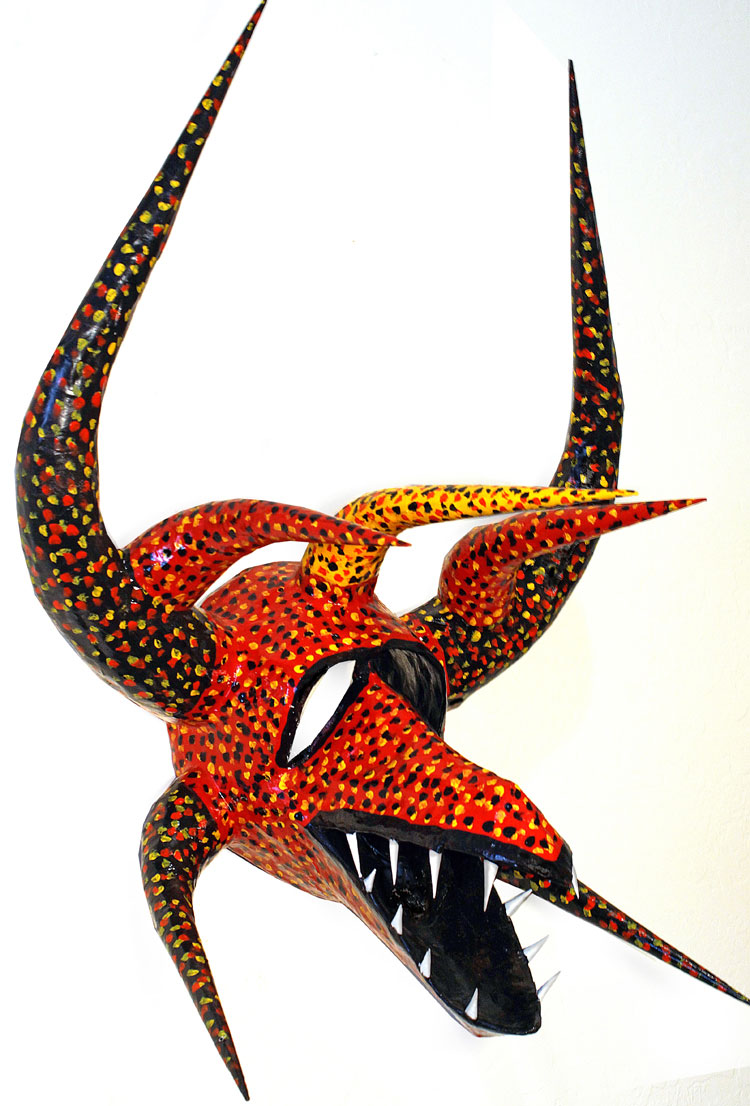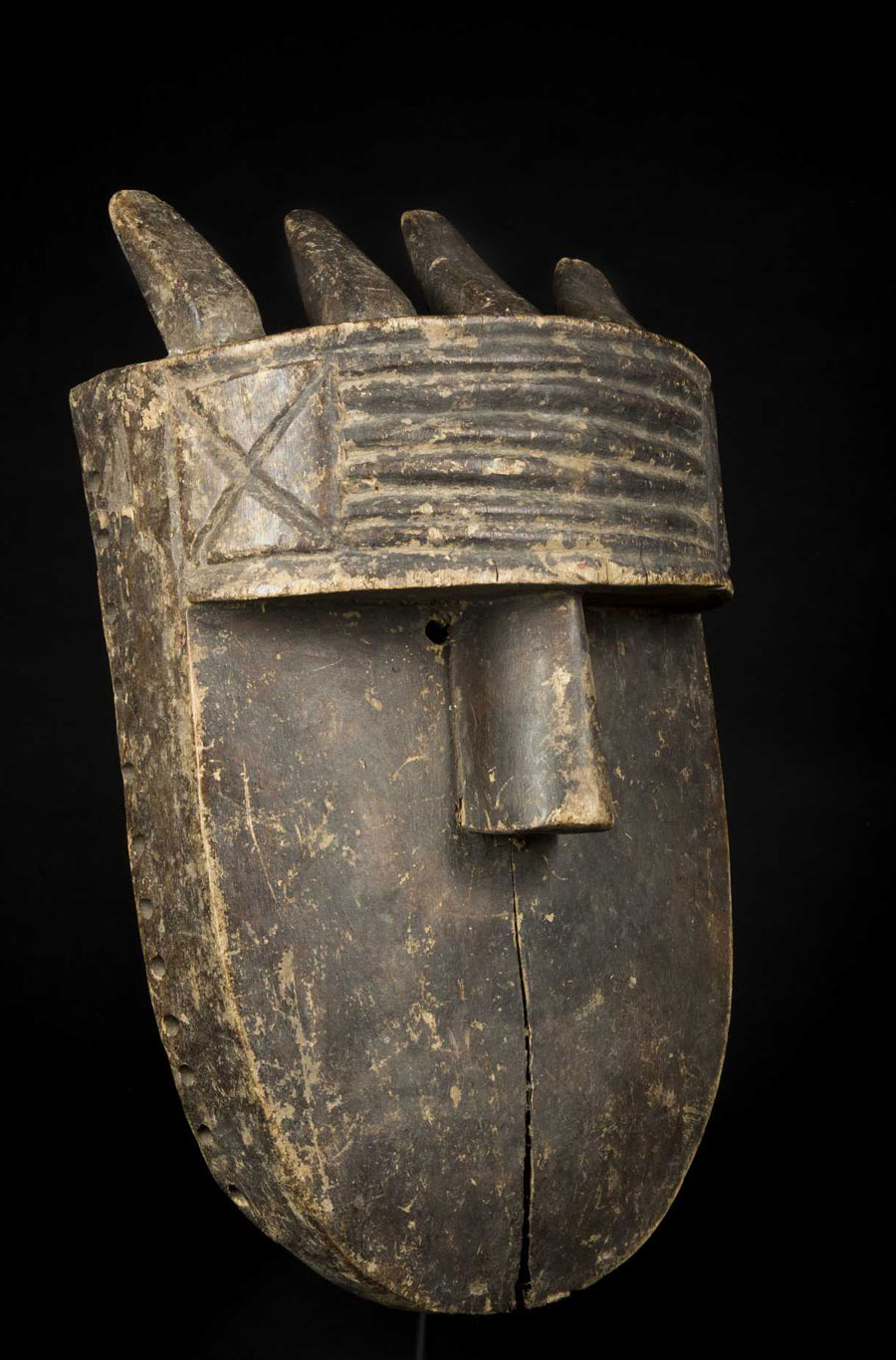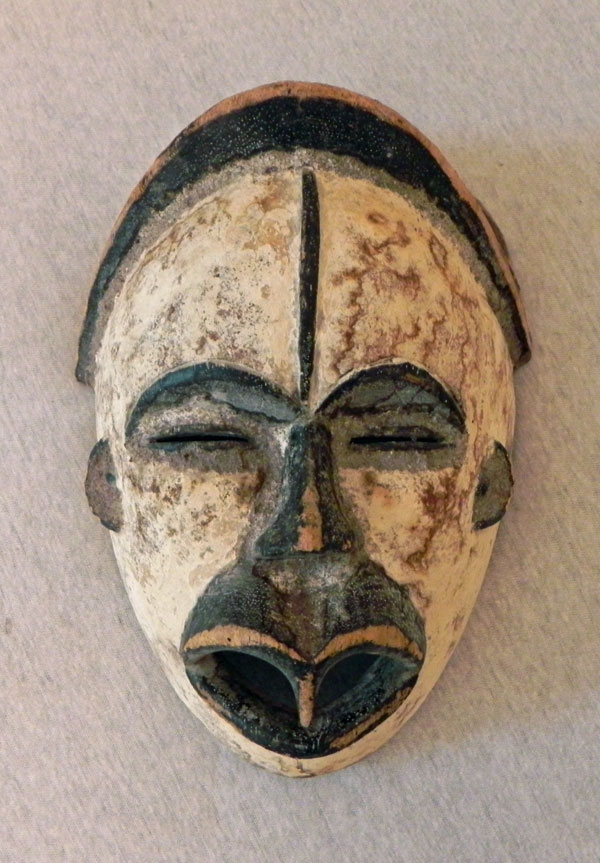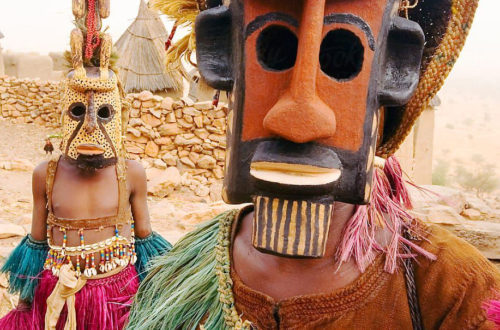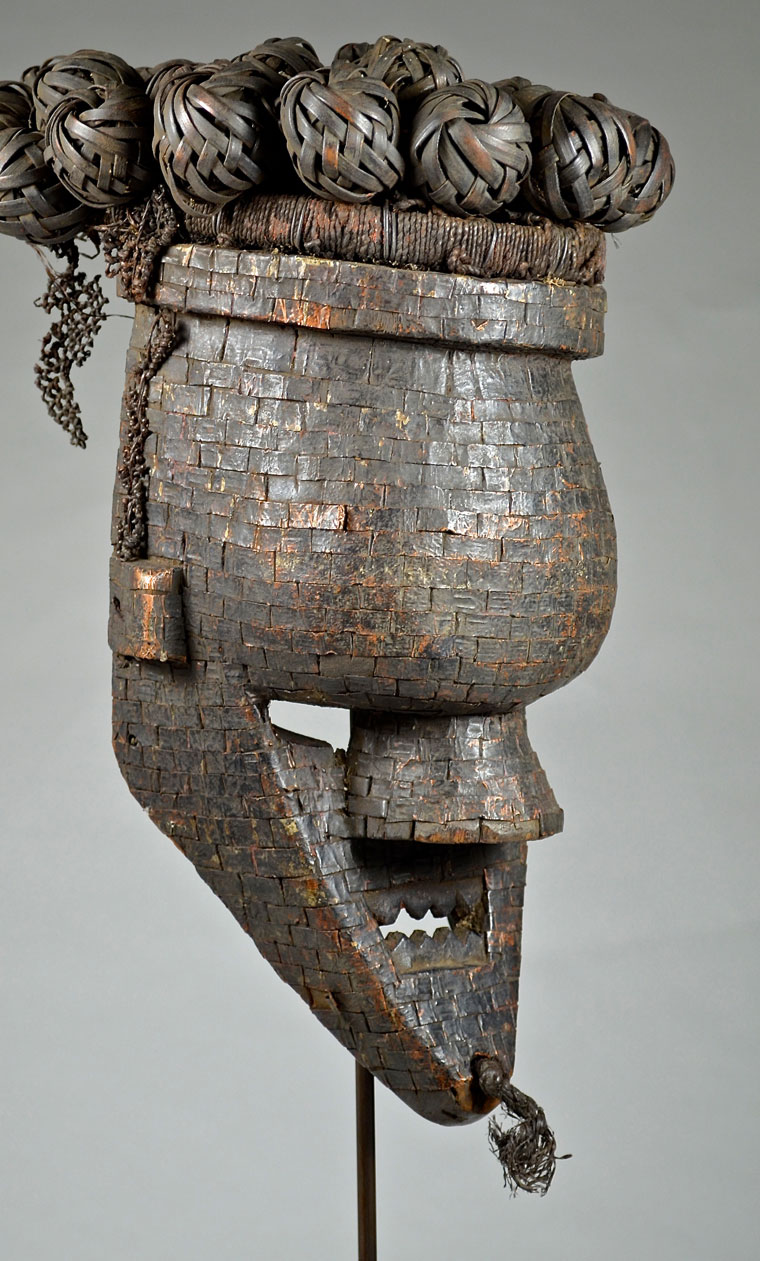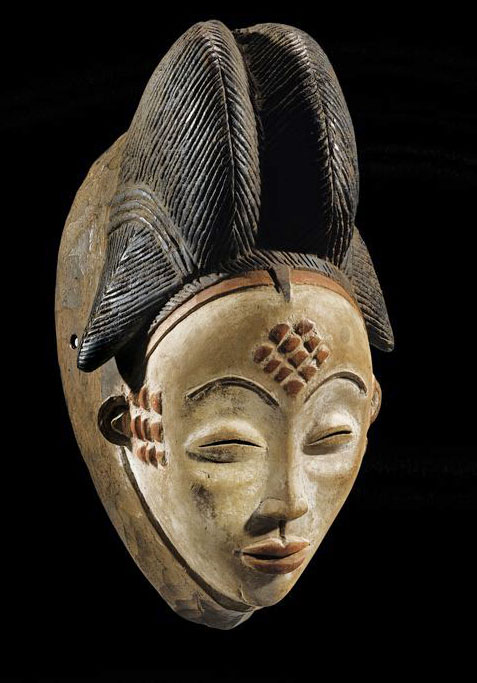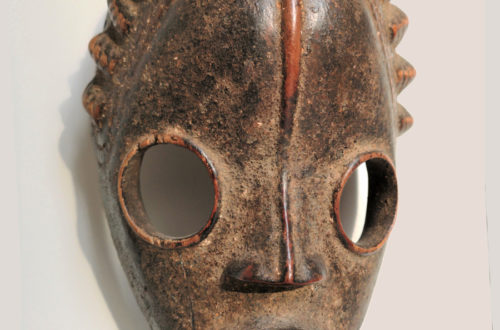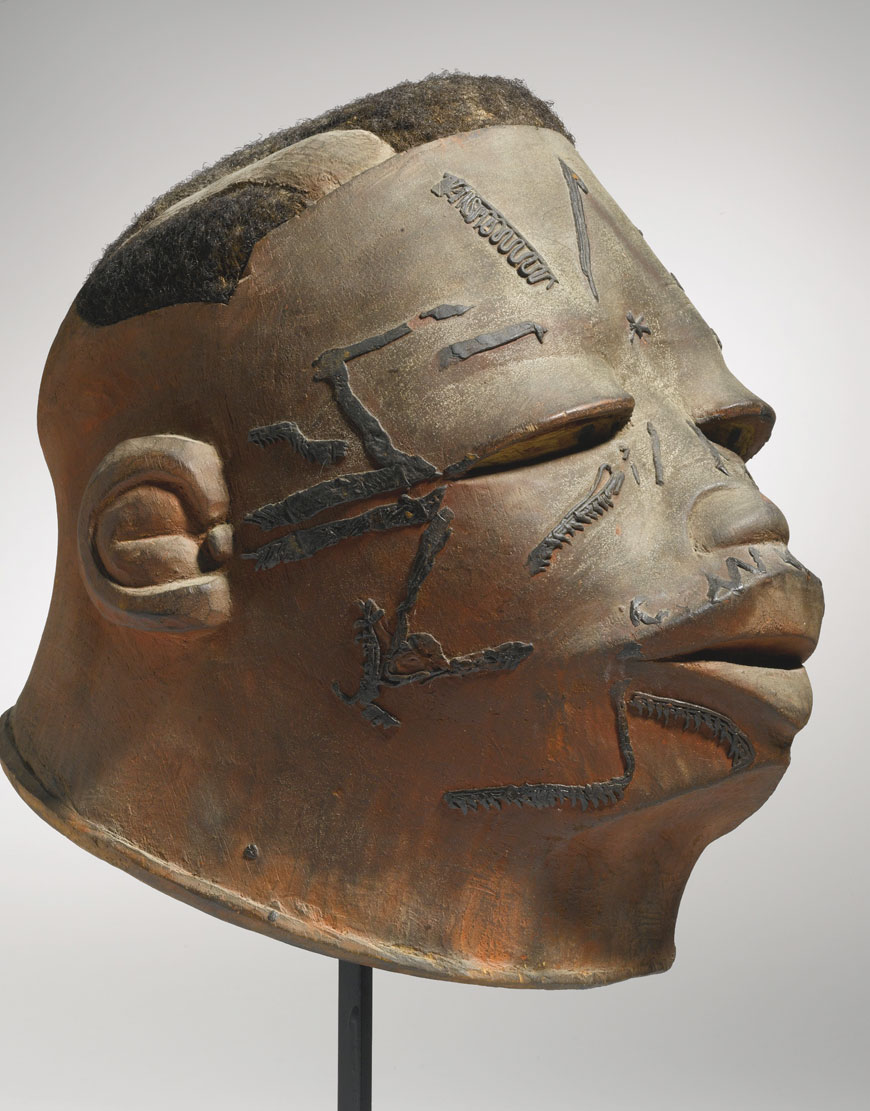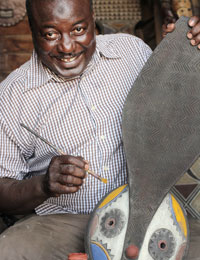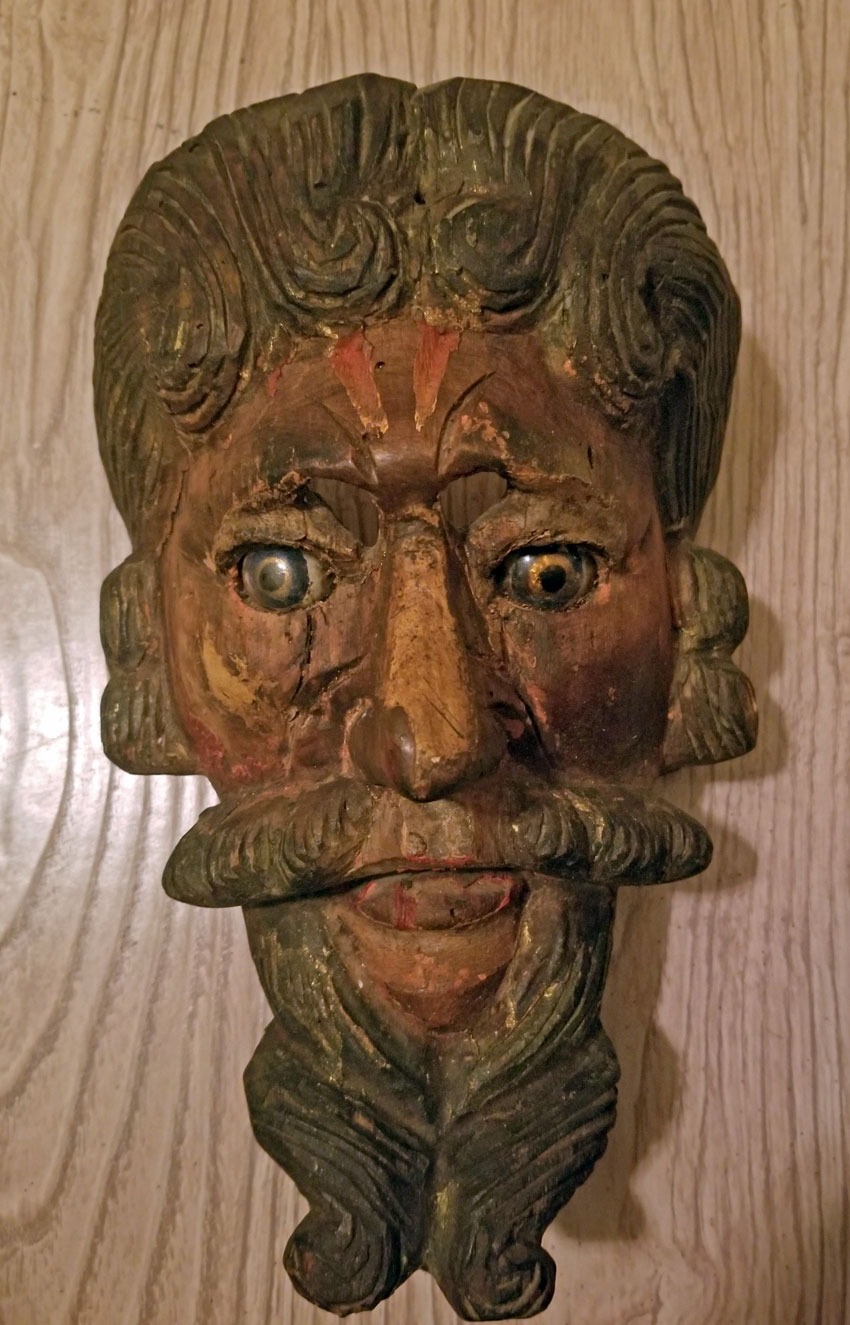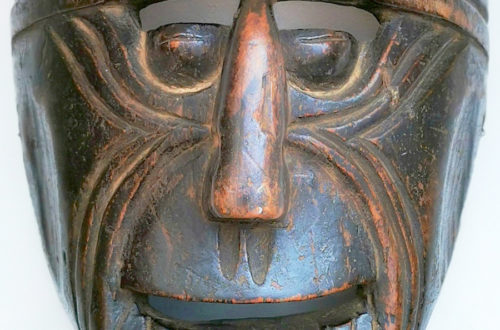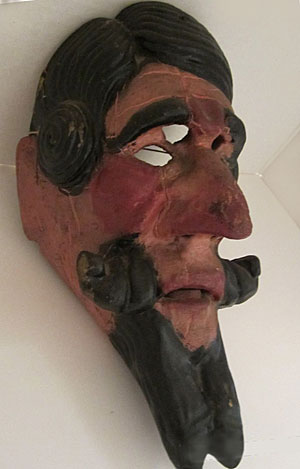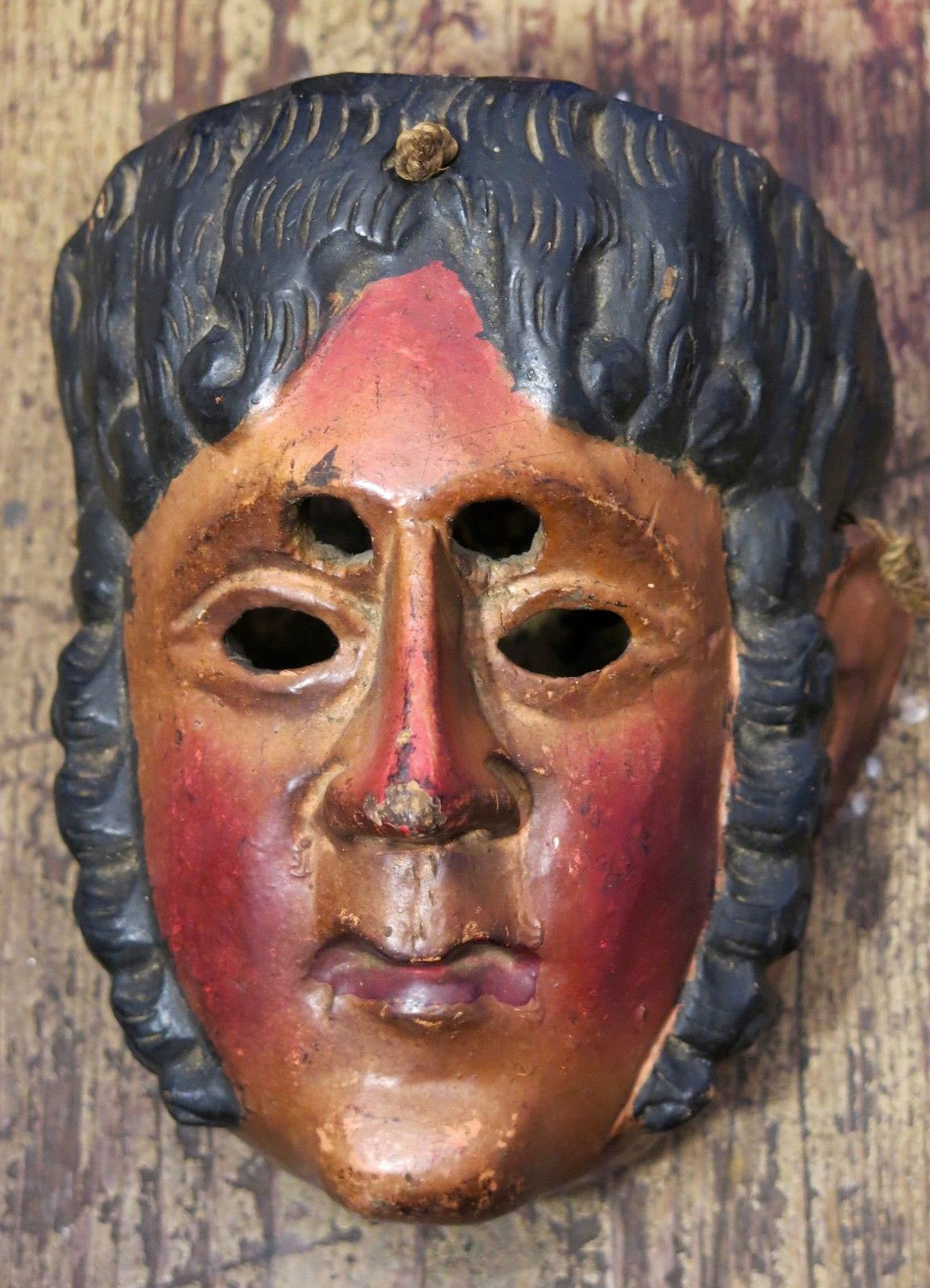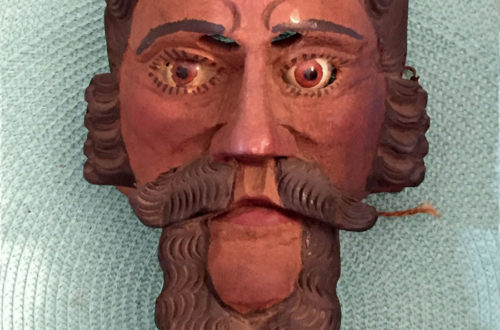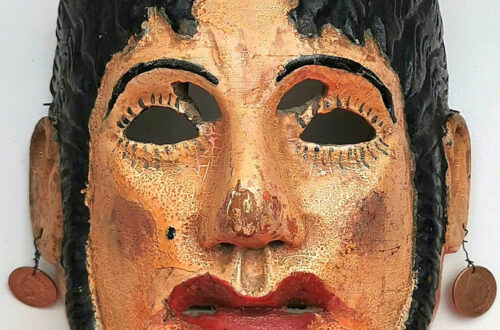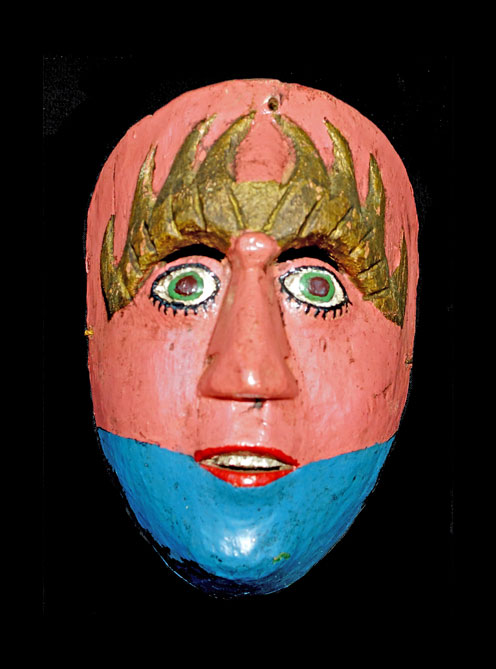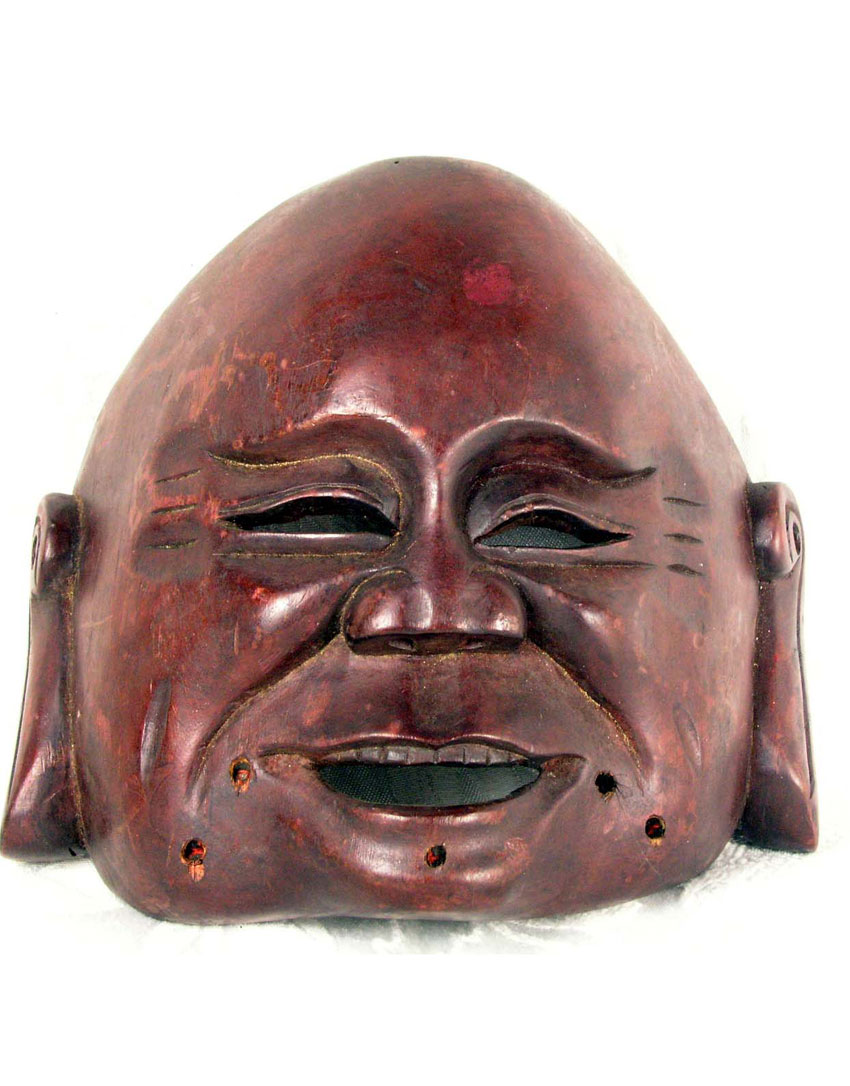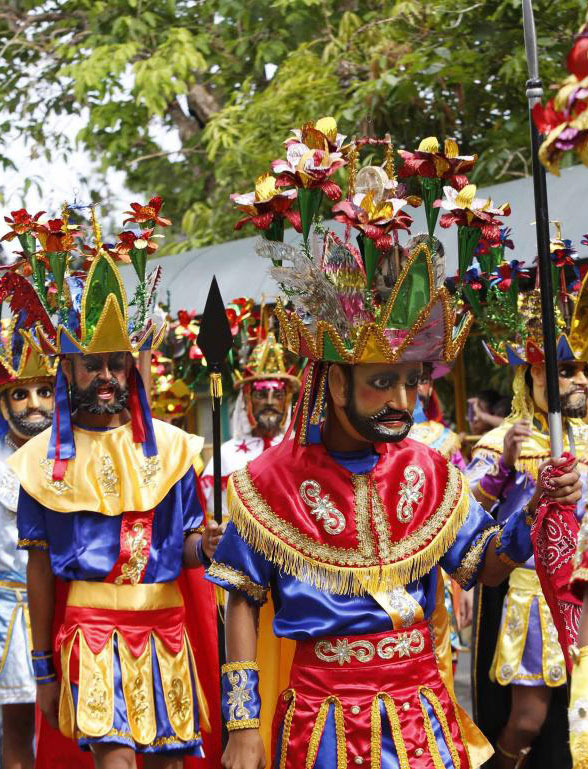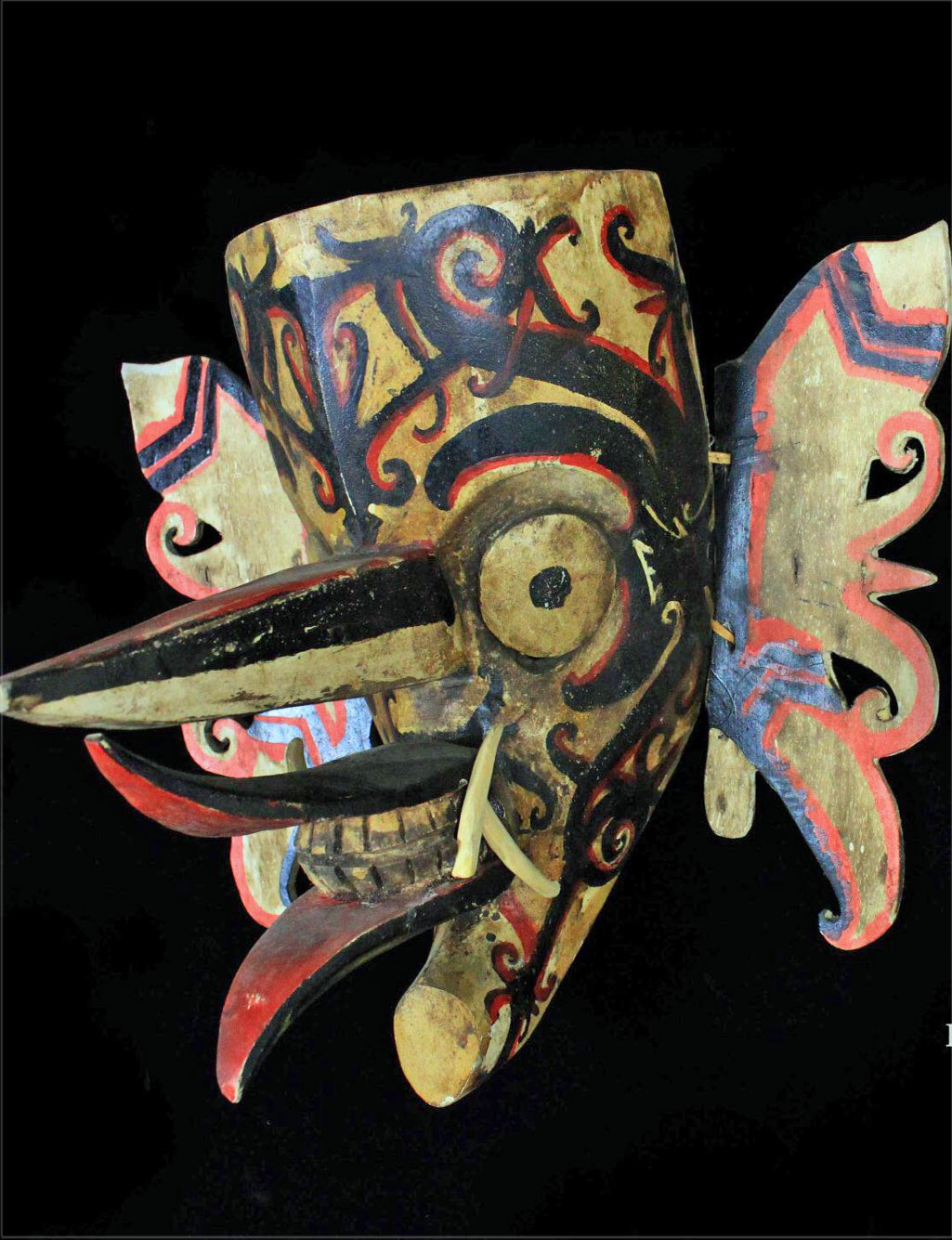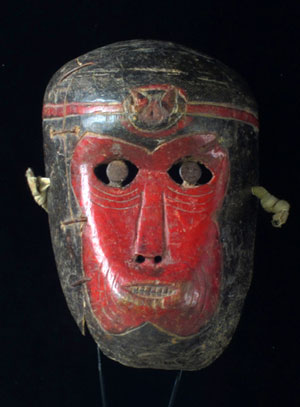Q: I’ve got a beautiful mask which I believe is the evil one. It came into my hands about 8 years ago from my uncle who traveled the world and collected masks. He told me to look after it as it could be worth something in a few years. I took the mask to a very good friend of mine who is actually from Bali Indonesia and she said the same. I believe it’s some sort of carved wood with horse hair. It’s such a shame to have it stored away so I was looking at selling it. The mask has a slight damage which is a bit of one…
-
-
Another mask for Muslim women
A comment on another style I have not seen before from one of our viewers: “Just recently I was in the Mask Museum in Belgium and they considered puppets a kind of masks. I was surprised but got convinced by their definition, so now I agree on considering the Burka a kind of mask too. There are other types of hijabs that more resemble masks, like the Battoula in some Arab states: https://en.wikipedia.org/wiki/Battoulah.” Rey
-
Peruvian Diablo mask
Q: I believe this devil mask is from Brazil. I inherited my friends’ home, and found this and two other masks; my friends had lived in Brazil about 20-30 years ago. The mask is approximately 15” tall and appears to be papier-mâché, though I’m not sure (one of the horns is soft). It looks like some images I’ve seen online of the Carnaval de Oruro. Can you tell me more about it and approximate worth? Carol, 1389 A: Not Brazil, but over their western border in Peru. Oruro is in Bolivia where the masks are similar in style. It has not been used. Large and very traditional, I think most…
-
Old or fake?
Q: Here is another Guatemalan mask, a conquistador, told to be from early 20th, from an old collection in LA. No trace of paint. Seems to be a nice patina on the back… but I wonder if this piece was waxed to give this brown uniform patina. Your impression would be really welcome. Jean, 1388 A: This classic mask could also be a Moor or some other character. Sometimes masks like this are repainted to be a different character if the morreria* is running out. The big question would be its authenticity. It does not have a morreria mark or any signs of paint. Also, I think the carving is…
-
Devil mask from northern Venezuela
Dancing Devils of Corpus Christi refers to a set of popular Venezuelan religious festivals held on Corpus Christi, celebrating the presence of Christ in the Eucharist. It generally refers to the practices of 11 brotherhoods in various regions, which include more than 5,000 people who are of African decent. (There are almost a million blacks living in Venezuela.) The Dancing Devils was recognized by UNESCO as Intangible Cultural Heritage in 2012. As you can see, Yare folk art is more like that from the Caribbean islands than anywhere else, i.e. papier mache monsters painted in bright colors. 1387
-
African Toma mask
This is called an Angbai mask by the Toma people of Guinea/Liberia. The mask is of classical form with four small horns slanting from the top, the brow heavy and with large nose and tiny eyes to either side, the brow ridge with linear patterns. The Angbai is a common style that is often on the market. They are never painted and always look old and used. My advice to collectors who can’t afford masks with documented provenance, is look for good design and craftsmanship… and pay for it as if it was a reproduction. This one certainly looks like an A. 1386
-
Buying a Punu mask
The famous white masks of the Punu people were worn during the okuyi performance, one of the rites of mwiri, an important male initiation society spread throughout southern and central Gabon. They are characterized by a face with youthful features, half-closed eyelids under slightly raised arching eyebrows, a fine realistically-rendered nose, a mouth pursed forward with full red-painted lips, painted red, and an elaborate crested coiffure. The hairstyles of these masks can vary. I think all three of the masks shown here may be authentic, but there are many reproductions that look just as good. These repros can be found today for as little as 100 dollars. An authentic Punu maiden…
-
More common Guatemalan mask
Q: Could you give me your opinion on this mask from Guatemala? I guess it could be an Alvarado? But I really wonder if it is “old” or just a tourist fake, artificially aged. Jean, 1384 A: This Pedro de Alvarado mask is popular with dancers and collectors. Many of them are reproductions that have been made to look old. This one has been skillfully aged with tinted varnish applications, rubbing, distressing, and probably a few other tricks. And always look at the back. There are no signs of wear. I’m glad that Jean broke my rule of one mask per month. If you look at the previous mask you…
-
Rare Guatemalan mask
Q: Could you give me your opinion on this mask from Guatemala? I guess it could be an Alvarado ? But I really wonder if it is “old” or just a tourist fake, artificially aged. PS… Do you think it could represent Pedro Portocarrero ? Jean, 1384 A: With a little more research you got it right. Pedro Portocarrero was one of the key officers in Pedro de Alvarado’s Spanish army that fought the Mayans. Portocarrero is sometimes danced in the Baile de la Conquista. We rarely see masks portraying this particular character. More importantly, we don’t see Guatemalan masks that are both old and used any more. Most of…
-
Chinese character mask
Q: I have another mask that I would like to ask you to please look at for me. This one is labeled Taiwan. It is a very dark red wood, perhaps mahogany? It is 1.5″ thick in parts, and is fairly heavy, almost 2 lbs. An interesting feature is that there are 5 holes around the underside of its mouth. There are bristles that have been cut protruding from these holes, which makes me think it must have had whiskers at one time, which someone removed. It measures just about 10″ across, and 9″ in height. Do you have a any ideas about this one’s purpose or origins? It appears…
